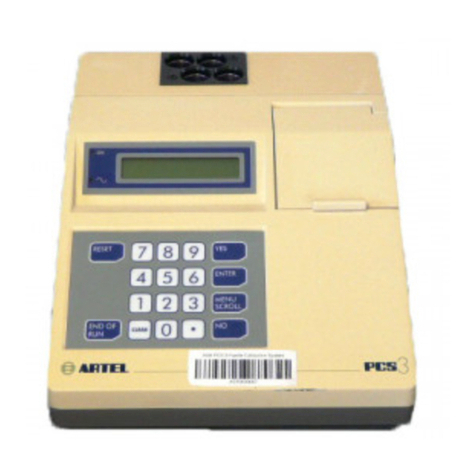Scan the Baseline Solution
Upon completing the Calibrator Plate reading, Data Manager will prompt the operator to scan
the Baseline Solution bar code and the bar code on the Baseline Verification Plate, if applicable.
Data Manager requires individual Baseline Plate readings for each Plate Type used.
Fill the plate with Baseline Solution and shake
Follow the next prompt and fill all wells of the microtiter plate with the requested amount of
Baseline Solution.
If filling a 384-well plate, centrifuge to remove any bubbles.
Place on the Plate Shaker. After shaking completes, examine the microtiter plate to ensure that
no splashing of liquid occurred during shaking. Reduce the speed of the Plate Shaker if needed.
If splashing occurs, discard the microtiter plate, press Cancel and repeat the test.
Read the Baseline Plate
Once the shaking step is complete, secure the Baseline-filled microtiter plate onto the Plate
Reader tray. When complete, click OK. The Plate Reader will read the microtiter plate and then
eject it. Discard this plate after use.
Measuring the Baseline Plate
7
Quick Tips:
• Calibrator Plate and Baseline Plate readings
are retained for ten hours.
• It is recommended that the Plate Reader
calibration be repeated if the temperature
changes by ±2
°
C or if the MVS is moved to
a new location.
• A Baseline Plate reading is required for each
Plate Type used, i.e., 96-well or 384-well.
• All MVS components should equilibrate to
room temperature for 1 hour before use.
To reset Plate Shaker speed:
• Select Preferences from the Options menu.
• In the Plate Shaker Settings area, adjust the
speed for the appropriate Plate Type.
• To return to default settings, click the
Default button next to the speed field.




























